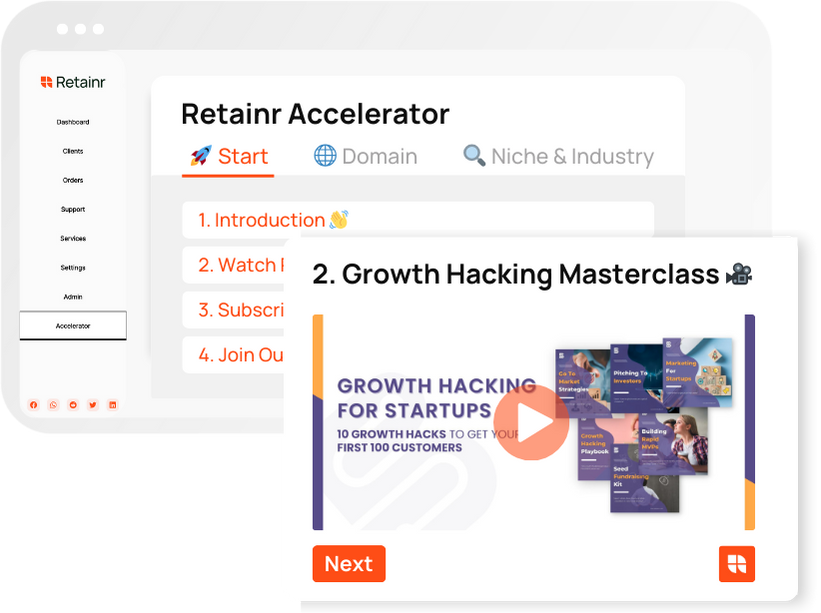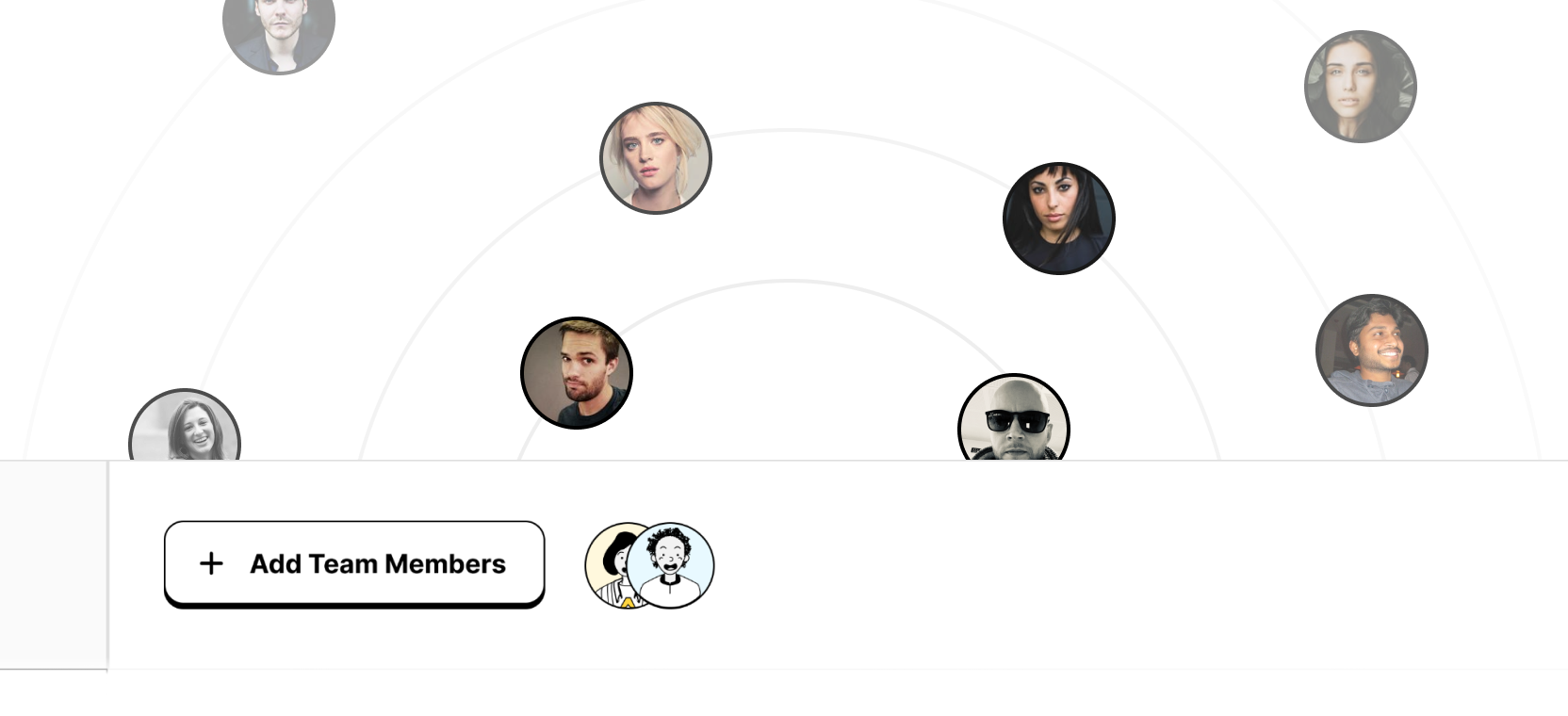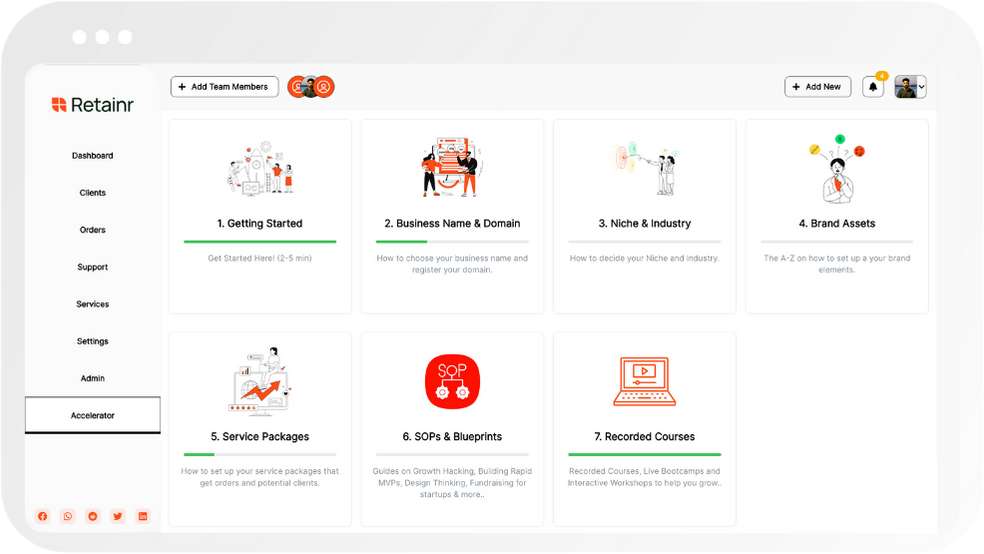
5 Rules for improving product engagement
Build with Retainr
Sell your products and services, manage clients, orders, payments, automate your client onboarding and management with your own branded web application.
Get Started1. What are the top 5 rules for improving product engagement?
1. Understand Customer Needs
Rule number one is all about understanding what your customers need. It's crucial to get into your customers' mindset and decipher what exactly they are looking for in your product. This includes a thorough study of your customers’ preferences, requirements, and interests. Use analytics and feedback data to gauge the demography, behavior and preferences of your users. Also, user research and surveys can be a great source of information.
2. Easy Onboarding
Secondly, focusing on easy onboarding can remarkably enhance product engagement. Make sure that the users find it easy to understand and use the product right from the get-go. Here's a simple table indicating the key factors:
| Factor | Description |
|---|---|
| User Interface | The user interface should be simple and intuitive. Provide step-by-step guides or tutorials if necessary. |
| Registration Process | Make the initial registration process easy and quick. Too many steps could be discouraging. |
3. Enhancing User Experience
The third rule is enhancing the user experience. A seamless, enjoyable user experience can tremendously boost product engagement. Some ways to do this include:
- Improving the product's design and functionality.
- Ensuring the product is bug and glitch-free.
- Offering round-the-clock customer support.
- Keeping your product updated with the latest trends and technologies.
4. Rewarding User Engagement
Rule number four is rewarding user engagement, which is an effective way to ensure they remain involved with your product. Rewards can be offered in various forms such as points, badges, discounts, or even special features that are exclusive to engaged users. Here's how these incentives can work:
- Points - Users earn points which can be converted into discounts.
- Badges - These are virtual tokens of achievements that users can show off.
- Discounts - Special offers or discounts exclusively for highly engaged users.
- Exclusive Features - Offering extra features or services that are only available to users who reach a certain level of engagement.
5. Feedback and Continuous Improvement
The fifth rule is about continuous improvement. Everyone has scope for improvement and this applies to your product as well. Constant research, data analysis, and user feedback are crucial tools for continuous improvement. Address complaints, use feedback constructively and always work towards refining your product to enhance user engagement even further.
2. How can implementing the 5 rules boost user engagement with a product?
Enhanced User Experience
Implementing these 5 rules can significantly enhance user experience. Firstly, by understanding your user's needs and preferences, you can tailor the product's features, design, and functionality to meet these needs. This results in a product that is more appealing and intuitive for the user. Secondly, providing clear product instructions and addressing any user concerns can reduce user frustration and enhance their overall product experience. Thirdly, continuous product updates can keep the product at par with the latest trends and technological advancements, ensuring your users always have the best and latest features at their disposal.
Increased User Engagement
The more enjoyable the user experience, the more likely the user is to engage with the product. So, incorporating these rules into your product development process is critical:
- Regular user feedback is an excellent way to determine how engaged your users are with the product and any improvements required.
- By constantly updating your product, you can maintain your user's interest and make them more likely to re-engage with the product.
- Effective communication with your users can help them overcome any issues they may be facing with your product, enhancing their product experience and improving overall user engagement.
Influence on User Engagement Metrics
Implementing these rules can also positively influence user engagement metrics, as seen in the table below:
| Metric | Impact of Implementing the 5 Rules |
|---|---|
| Active Users | Increase, as users find the product more useful and enjoyable |
| Session Duration | Increase, as users are more engaged with the product |
| Churn Rate | Decrease, as the product is continually improved based on user feedback |
3. How does improving product engagement help in achieving better business outcomes?
Improving Product Engagement for Better Business Outcomes
Understanding the role of product engagement is crucial to achieving better business outcomes. A strong customer engagement correlates directly with various business benefits including increased customer loyalty, stronger customer relationships and better customer retention. It also paves the way to gain significant feedback, empowering you with the input necessary to improve the product and services catered to your customers. Let’s delve into how precisely product engagement can lead to more positive business outcomes:
- Increased Customer Retention: Customers engaged at a deeper level with your product are more likely to return and make repeat purchases. Engagement gives them a sense of belonging which leads to loyalty and less likelihood of shifting to competitors.
- Positive Word-of-Mouth Marketing: Highly engaged customers often become advocates for your brand, thus promoting positive word-of-mouth marketing. In the age of social media connectivity, this is an invaluable advantage.
- Improved Return on Investment (ROI): By enhancing product engagement and user experience, conversion rates increase leading to boosted overall ROI.
The following table illustrates how improving product engagement can enhance some key business metrics, and therefore result in better business outcomes:
| Business Metric | Impact of Improved Product Engagement |
|---|---|
| Customer Retention | Increased lifetime value of customers due to consistent repeated purchases |
| Brand Reputation | Boosted by positive reviews and increased word-of-mouth referrals |
| Sales Revenue | Rises with higher conversion rates combined with greater customer loyalty |
| Product Iteration | Feedback from engaged users can help guide the development and improvement of products |
4. Can you give examples of successful businesses that have used the 5 rules to improve product engagement?
Examples of Businesses Implementing the Five Rules
Several successful businesses have utilized the five rules to improve their product engagement. The following are prime examples:
- Apple - Apple successfully uses the concepts of simplicity and intuitiveness, offering clear benefits to the end-user. They also focus on retaining user engagement through regular updates, therefore, demonstrating the 1st, 2nd, and 5th rule.
- Amazon - Amazon's preview feature helps users to have a simulated experience of their desired products, effectively adopting the 3rd rule. Additionally, through Amazon Prime, they successfully achieve user retention and create user habits of frequently checking deals and recommendations, satisfying the 2nd, and 5th rule.
- Facebook - Being a social networking site, Facebook excels in providing the 3rd, 4th, and 5th rule. They have developed systems that analyse user preferences and suggest content accordingly, which is another way of simulating the experience. They also make the user actively involved in various activities on the platform like groups, events, etc.
| Company | Implemented Rules |
|---|---|
| Apple | 1st, 2nd, 5th rule |
| Amazon | 2nd, 3rd, 5th rule |
| 3rd, 4th, 5th rule |
Significance of Successful Implementation
The implications of these successful implementations are immense. The right approach and effective execution of these rules result in users spending more time with products, thereby leading to increased loyalty and profitability. It implies that businesses focusing on these aspects can attain better engagement, retention, and ultimately a higher conversion rate.
5. How can you measure the impact of the 5 rules on product engagement?
Setting Metrics to Measure Rule Impact
First, to assess the influence of these rules on product engagement, you need to determine relevant metrics. Some of the metrics include customer retention rates, customer churn rate, and user session length. A brief description of these metrics is tabulated below:
| Metric | Description |
|---|---|
| Customer Retention Rates | The percentage of customers who continue to use your product over a specific period. |
| Customer Churn Rate | The percentage of customers who stop using your product over a specific period. |
| User Session Length | The duration a user spends on your product in a single session. |
Utilizing Analytical Tools
After selecting relevant metrics, the second step involves utilizing analytical tools to measure these. Google Analytics, Heap, and Mixpanel are examples of such tools. They provide you with insights into user behavior, facilitate data-driven decision making, and allow for accurate measurement and reporting. Each tool provides features to help generate product engagement data:
- Google Analytics: Tracks and reports website traffic.
- Heap: Automatically captures every web, mobile, and cloud interaction.
- Mixpanel: Supports tracking of interactions with web and mobile applications.
Comparing Pre, and Post Implementation Data
Finally, the third step involves comparing data from before and after implementing the five rules. By comparing metrics such as customer satisfaction rates, average session lengths, and user activity frequency, you can assess how the rules have impacted product engagement. Periodic measurements would help in understanding if these engagements are improving, declining or remaining stagnant, and provide actionable insights.
6. How does personalization play a role in improving product engagement?
Understanding Personalization in Product Engagement
Personalization is a powerful tool that plays a crucial role in improving product engagement. Personalization means tailoring a user's experience to their individual needs, behaviours, and interests. By presenting them with highly relevant and customized content, products, or services, businesses can significantly enhance the user experience, leading to increased product engagement. Personalization can be achieved in various ways, such as using personalized content, personalized product recommendations, and personalized communication.
Advantages of Personalization
- Enhanced User Experience: By tailoring the product or service to the user's needs and preferences, businesses can provide an enhanced user experience that makes their customers feel valued and understood.
- Increased Engagement: Personalized content and product recommendations can significantly increase the level of user engagement with the product or service. When users see something relevant to them, they are more likely to engage with it.
- Improved Customer Retention: Personalization can lead to increased customer satisfaction and loyalty, resulting in higher customer retention rates. Customers are more likely to return to a business that understands their needs and tailors its offerings to those needs.
Personalization Techniques to Boost Product Engagement
| Technique | Description |
|---|---|
| Personalized Content | Customizing the content a user sees based on their preferences, past behaviour, and other data. This can include personalized web pages, emails, and notifications. |
| Behavioral Targeting | Targeting users based on their past behaviour, such as the pages they visited, the products they purchased, or the content they interacted with. This allows businesses to predict what the user might be interested in and provide them with relevant content or products. |
| Personalized Product Recommendations | Recommending products or services that a user might be interested in based on their past purchases, browsing history, and other data. This can significantly improve the user's experience and increase their engagement with the product or service. |
7. What resources or tools can help in executing the 5 rules for product engagement?
Product Engagement Tools
Several tools can support businesses in efficiently implementing the five rules for product engagement. These tools encompass a variety of functionalities that ensure efficient customer engagement, quantifiable user interaction, and invaluable consumer insights.
Crucial Tools for Implementing Product Engagement Rules
- Heatmap tools: Tools like Crazy Egg, mouseflow can help businesses understand user behavior on their platform by presenting click, scroll, and move heatmaps. These tools are crucial for improving user interface and experience.
- Analytics tools: Google Analytics and Mixpanel are excellent tools that' provide detailed insights on how users interact with your product, thus enabling data-driven decisions.
- Customer feedback tools: Tools like UserVoice and GetSatisfaction provide platforms for users to share their feedback and ideas, effectively contributing to product development.
Resources for Product Engagement
Beyond tools, there are also several resources that can assist businesses in implementing the five product engagement rules. These resources range from expert advice to informative guides on the subject.
| Resources | Description |
|---|---|
| Intercom Blog | A blog that provides expert views and practical strategies on product engagement and customer retention. |
| Klipfolio | This provides a set of KPIs focused on product engagement, which can aid businesses in tracking and improving their user engagement. |
| ConversionXL | A website offering articles, courses, and research on optimizing conversion rates, a critical part of product engagement. |
8. How soon can we expect to see results after applying these 5 rules?
Timeline for Results
Implementing 5 rules designed to enhance product engagement isn't an instantaneous process. It requires careful strategising, execution, monitoring, and adjustments before noticeable results begin to manifest. The timeframe can vary widely depending on a myriad of factors including product type, industry, target audience and the competitive landscape.
- Short term (1-2 months): Preliminary signals may begin to emerge. Such signals could include slight improvements in user interaction, increased time spent on product pages, and a surge in product inquiries.
- Medium term (3-6 months): By this time, more robust indications should become evident. You might observe an uptick in lead conversion rates, a decrease in churn rates, and robust user growth.
- Long term (6-12+ months): Sustainable growth and significant improvements in customer loyalty could be experienced. There might be an upsurge in repeat purchases, referrals, and a stronger market presence.
Factors Influencing Results
Although the timeline provided gives a general idea, it's key to note that actual results can differ. The time it takes to see results greatly depends on several underlying factors such as:
| Factor | Description |
|---|---|
| The quality of execution | Well-implement strategies can yield quicker, more impressive results. |
| Competitive landscape | Expected timelines might be extended in highly competitive markets. |
| Product type | Products with a longer sales cycle might take longer to show significant results. |
Importance of Continual Evaluation
Determining the success of these product engagement rules requires continual evaluation and adjustment. It's recommended to track your progress using key performance indicators (KPIs) and adjust your strategies as necessary. Even after significant improvements, continual optimization is crucial for maintaining high rates of product engagement.
9. Are these 5 rules applicable to all kinds of products or services?
Applicability of the 5 Rules across Products and Services
The 5 rules for improving product engagement are indeed applicable across a wide variety of products and services, irrespective of the industry. However, the implementation of these rules may differ based on the nature of the product, the target audience, and many other factors that are unique to each product or service. For instance, what works for a technological product may not work for a food product, but the fundamental principles behind the rules remain the same.
For clarity, here are the 5 rules along with examples of how they can be applied to different product types:
| Rule | Technology Product | Food Product |
|---|---|---|
| 1. Understand Your Users | Survey to know their tech preferences. | Conduct taste tests and focus groups. |
| 2. Make Your Product Valuable | Offer unique features that solve real problems. | Ensure high-quality ingredients and taste. |
| 3. Keep it Simple and Intuitive | Easy-to-navigate User Interface. | Simple and clear labelling, easy-to-open packaging. |
| 4. Build a Community | Create user forums and tech communities. | Host food festivals and create fan groups. |
| 5. Encourage Feedback | Have a feedback form on your website and app. | Include feedback forms inside the product packaging. |
While the examples above are specific to technology and food products, the variety of applications extends far beyond these two product types. It emphasizes the point that the 5 rules are indeed universally applicable to all kinds of products or services, though their implementation can be customized based on specific needs.
10. How can these 5 rules be adapted for different types of audiences or markets?
Adapting Rules for Different Audiences
The beauty of the five rules for improving product engagement is their flexibility and adaptability. One can tailor these rules to meet the unique needs and preferences of different audiences or markets. Here’s how:
- Know your audience: This is the foundation of all strategies. Whether your market is composed of millennials, professionals, or seniors, research about their preferences, behavior, and pain points. Use this information to adapt your engagement rules. For instance, younger audiences may prefer engaging through social media or mobile apps, while older audiences may prefer email or direct mail.
- Customize your messaging: An essential way to reach different markets effectively is by customizing your messaging. Personalization plays a significant role in product engagement. Understanding the personas of your markets can guide you in personalizing your messages, making it more relevant and engaging to them.
- Use appropriate channels: Different audiences engage differently. While some may prefer direct communication channels like emails or calls, others might interact more through social media or digital apps. Identifying and utilizing the right channels for your market substantially expands and improves product engagement.
Varying Engagement Strategies per Market
Here's a table showcasing how different markets may require varied engagement strategies:
| Audience | Engagement Strategy |
|---|---|
| Millennials | Social media engagement, mobile apps, personalized messaging |
| Professionals | Emails, webinars, informative blogs and articles |
| Seniors | Direct mails, phone calls, newsletters, user-friendly interface |
Adapting for International Markets
For companies operating on a global scale, understanding cultural nuances can help in adapting these rules. Localization, translating, and adjusting your products and campaigns to fit local consumer preferences and culture, can drive engagement. Here's how these rules can be adapted:
- Cultural considerations: Be sensitive to cultural nuances. What works in one country might fail in another. Tailor your strategies to fit the cultural context of your target market.
- Language adaptability: Translate product information, campaigns, and messages to the local language. This helps local markets understand your product better and increases the likelihood of engagement.
- Local partnerships: Collaborating with local influencers, distributors, or organizations can boost your credibility. Local partnerships facilitate trust and help promote product engagement.
Conclusion
Improve Product Engagement with These Five Rules
In the digital marketplace, boosting product engagement is a must for every business. Increased product engagement results in higher user retention rates, boosted user satisfaction, and improved product growth. Here are five rules for increasing product engagement:
1. Prioritize User Feedback
A customer-centric approach is essential for improving product engagement. Encourage users to provide feedback and ideas for improvements, and showcase how their input benefits the product.
2. Enhance User Experience
An intuitive, easy-to-navigate interface keeps users coming back. Monitor user behavior to identify and improve any points of friction within the user experience.
3. Personalize User Experience
Users appreciate a personalized experience. Companies can achieve this through individualized communication, targeted promotions, and personalized recommendations based on past user activity.
4. Use Gamification Elements
Adding elements of game playing like rewards, competition, and rankings can increase user engagement.
5. Implement Ongoing Engagement Strategies
Continuous engagement is a key driver of product growth. Use strategies like drip email campaigns, regular product updates, and new feature launches to keep users engaged.
While these tactics can be beneficial, streamlining the process with the right software can prove to be even more advantageous. Therefore, to maximize product engagement and manage these tactics more efficiently, consider using a tool like Retainr.io.
Why Choose Retainr.io?
Retainr.io is a whitelabel software that assists businesses in selling products, managing clients, handling orders, and processing payments. Its unique features include the ability to customize your own branded app, which can provide a seamless experience for your customers and differentiate your brand.
Retainr.io can also take care of managing client feedback, simplifying user experience enhancements, facilitating personalized user interactions, and implementing ongoing engagement strategies. Visit the Retainr.io website to see how this software can help you improve your product engagement.
Boost Your Agency Growth
with Retainr Accelerator
Uncover secrets, strategies, and exclusive blueprints to take your agency's growth to the next level — from marketing insights to effective presentations and leveraging technology.

SOPs, Cheatsheets & Blueprints
Leverage 50+ SOPs (valued over $10K) offering practical guides, scripts, tools, hacks, templates, and cheat sheets to fast-track your startup's growth.
Connect with fellow entrepreneurs, share experiences, and get expert insights within our exclusive Facebook community.
.jpg)

Join a thriving community of growth hackers. Network, collaborate, and learn from like-minded entrepreneurs on a lifelong journey to success.

Gain expertise with recorded Courses, Live Bootcamps and interactive Workshops on topics like growth hacking, copywriting, no-code funnel building, performance marketing and more, taught by seasoned coaches & industry experts.

.jpg)

.jpeg)


